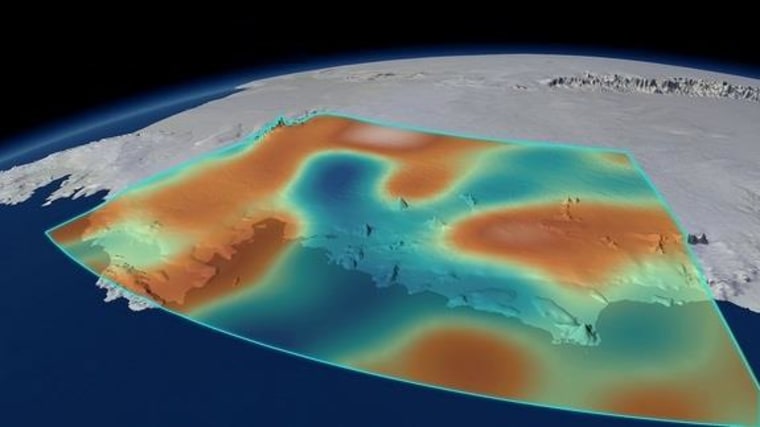West Antarctica's incredible weight loss can be felt from space, a new study reports.
So much ice has disappeared from West Antarctica in recent years that Earth's gravity is now weaker there, researchers reported in the Aug. 28 issue of the journal Geophysical Research Letters.
Earth's gravity fluctuates in small ways that are caused by changes in mass. When hefty ice sheets melt, there is less ice and thus less gravitational force pulling in that area.

The new results come partly from the European Space Agency's GOCE satellites, which are on a four-year mission to map Earth's gravity in high resolution. The GOCE gravity map was combined with gravity measurements recorded from the GRACE satellites, a U.S.-German mission that tracks changes in Earth's ice sheets via gravity. Merging the information from both satellites allowed researchers to measure West Antarctica's ice loss.
The satellites recorded a dip in Earth's gravity field due to extensive ice loss in West Antarctica. The shrinking glaciers and ice shelves, whittled by warm ocean currents, tugged more gently when the satellites sped by overhead. [Watch: Antarctic Ice Loss Causes Dip In Earth's Gravity]
Each space mission consists of two satellites orbiting near each other. Slight distance changes occur between the satellites as they dip or rise over gravity highs and lows. Computers translate those shifts, sometimes smaller than a hair's width, into an estimate of Earth's gravity field.
The precise measurements suggest West Antarctica shed some 209 billion metric tons (230 billion tons) of ice each year between 2009 and 2012. This region of Antarctica may have passed a tipping point into unstoppable collapse, according to studies published earlier this year.
The research team, led by Johannes Bouman from the German Geodetic Research Institute, now plans to analyze ice loss from all of Antarctica, according to a statement from ESA.
— Becky Oskin, LiveScience
This is a condensed version of a report from LiveScience. Read the full report. Email Becky Oskin or follow her on Twitter. Follow LiveScience on Twitter, Facebook andGoogle+.